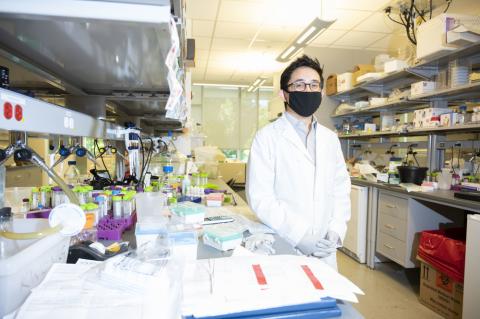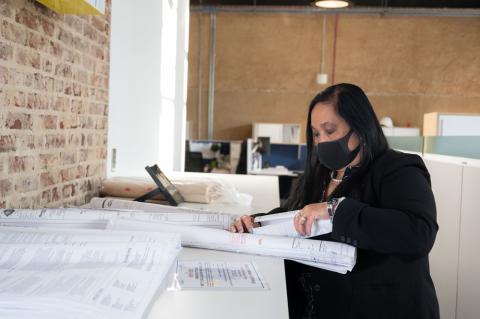While the Institute is planning to restore normal occupancy in residence halls, classrooms, and laboratories, many employees are asking what "normal" means for employee offices, cubicles, and other workspaces. What is the new normal for employees?
When the pandemic disrupted the world, Georgia Tech launched a swift and ambitious transition to modified operations on campus. The campus community – whether online or on campus – responded in kind, and quickly absorbed new ways to learn, collaborate, and work. One year later, President Ángel Cabrera shared plans to return to campus with full operations – including full on-campus learning – for Fall 2021.
While the Institute is planning to restore normal occupancy in residence halls, classrooms, and laboratories, many employees are asking what "normal" means for employee offices, cubicles, and other workspaces. What is the new normal for employees?
To answer those questions and more, the Institute launched the Future of Work @ Georgia Tech working group last month. With a focus on the fall semester, the cross-campus partnership seeks to understand what the optimal return-to-work strategy should be for Georgia Tech. This new project builds on the foundations created by the Workforce of the Future Initiative.
One of the goals in the Institute’s 10-year strategic plan is to lead and inspire by example by creating a culture of deliberate innovation in all our practices.
With input from employees, leadership, and external consultants, the Future of Work working group will create an innovative workforce strategy that defines Georgia Tech’s approaches and priorities for staffing, professional development, employee engagement, and retention.
Kim D. Harrington, chief human resources officer and project team member, said the working group will also examine and build on lessons learned during the pandemic.
“There is a tremendous opportunity to optimize the workplace for an evolving workforce. There is an expectation for work to look different at Georgia Tech.” Harrington said. “As we reflect on and analyze the successes and challenges of the past year, we are examining how the future of work can successfully combine virtual, onsite, and hybrid experiences without compromising the student experience.”
Over the next three months, the project team will:
- Research best practices, survey employees, and conduct focus groups with staff and people leaders, or people with direct reports.
- Analyze survey data and develop and share recommendations to Georgia Tech leadership.
- Develop a tactical action plan to support staff.
The plan would also define and address policy changes, new management practices, space requirements, technology requirements, and other essential items to support employees.
“The optimal workforce strategy will achieve excellence through a combination of remote and hybrid working conditions,” said project team member Daren Hubbard, chief information officer and vice president for Information Technology.
“The strategy must remove any cultural, policy, physical, or other barriers to success; cultivate the well-being of staff across the Institute, wherever they are working; and engage, develop, and retain our talent,” he said.
In the coming days, some employees and people leaders may receive invitations to participate in focus groups and surveys.
Additional Images


